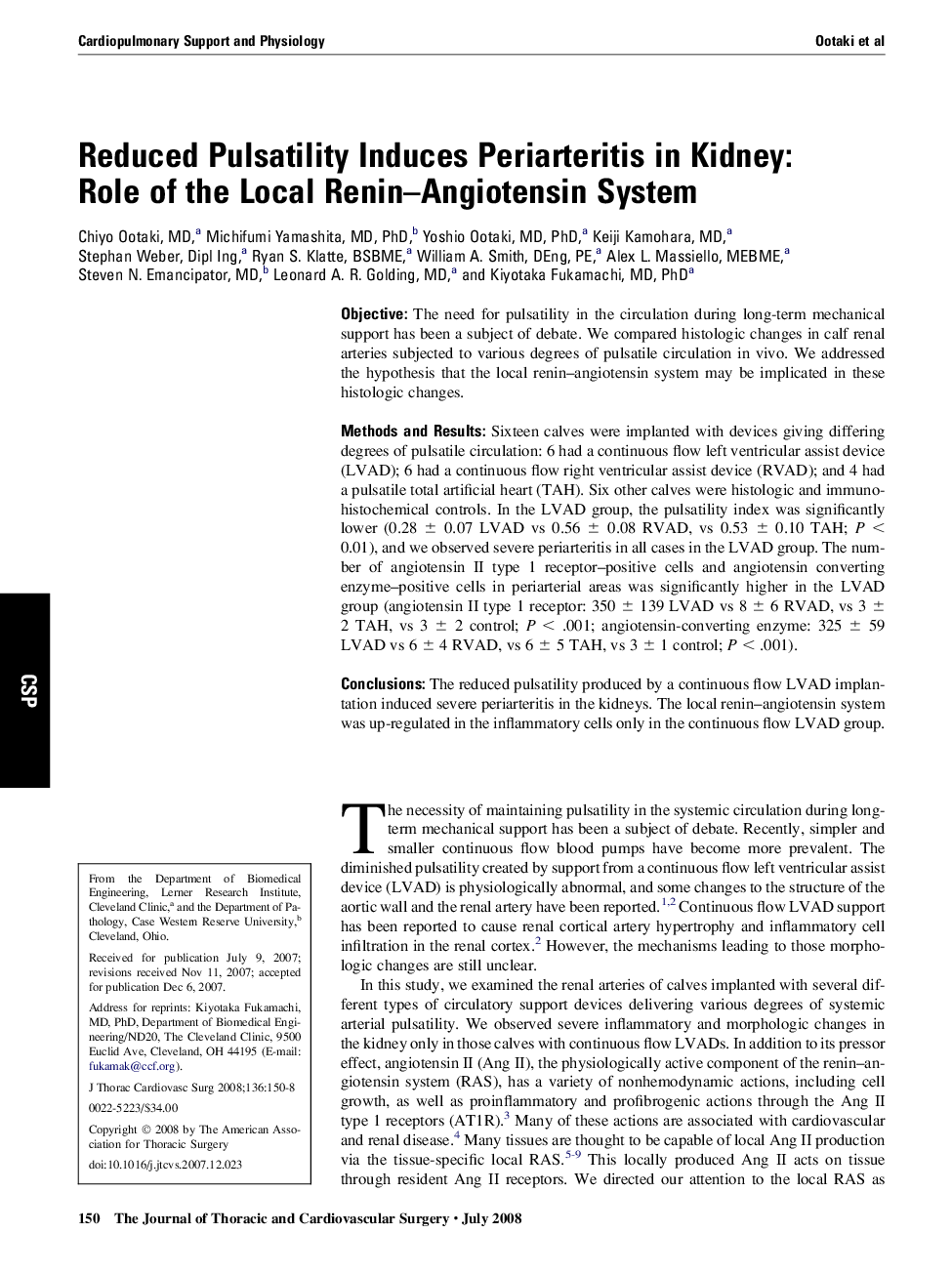| Article ID | Journal | Published Year | Pages | File Type |
|---|---|---|---|---|
| 2986175 | The Journal of Thoracic and Cardiovascular Surgery | 2008 | 9 Pages |
ObjectiveThe need for pulsatility in the circulation during long-term mechanical support has been a subject of debate. We compared histologic changes in calf renal arteries subjected to various degrees of pulsatile circulation in vivo. We addressed the hypothesis that the local renin–angiotensin system may be implicated in these histologic changes.Methods and ResultsSixteen calves were implanted with devices giving differing degrees of pulsatile circulation: 6 had a continuous flow left ventricular assist device (LVAD); 6 had a continuous flow right ventricular assist device (RVAD); and 4 had a pulsatile total artificial heart (TAH). Six other calves were histologic and immunohistochemical controls. In the LVAD group, the pulsatility index was significantly lower (0.28 ± 0.07 LVAD vs 0.56 ± 0.08 RVAD, vs 0.53 ± 0.10 TAH; P < 0.01), and we observed severe periarteritis in all cases in the LVAD group. The number of angiotensin II type 1 receptor–positive cells and angiotensin converting enzyme–positive cells in periarterial areas was significantly higher in the LVAD group (angiotensin II type 1 receptor: 350 ± 139 LVAD vs 8 ± 6 RVAD, vs 3 ± 2 TAH, vs 3 ± 2 control; P < .001; angiotensin-converting enzyme: 325 ± 59 LVAD vs 6 ± 4 RVAD, vs 6 ± 5 TAH, vs 3 ± 1 control; P < .001).ConclusionsThe reduced pulsatility produced by a continuous flow LVAD implantation induced severe periarteritis in the kidneys. The local renin–angiotensin system was up-regulated in the inflammatory cells only in the continuous flow LVAD group.
